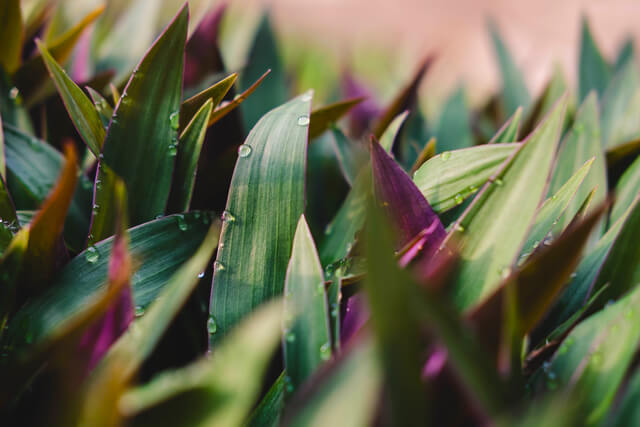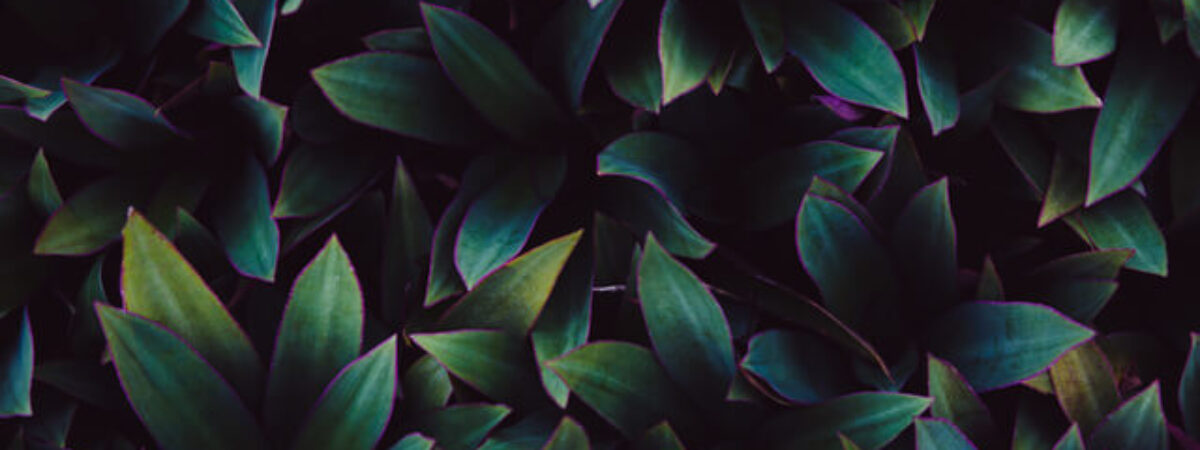Tradescantia spathacea commonly known as oyster plant is a colorful plant with a striking appearance. These are perennial herbaceous plants with seasonal blooming habits.
Oyster Plant is a herb commonly known as Moses-in- the- cradle belongs to the Commelinaceae family. These plants are native to South Mexico, Guatemala and Belize.
The leaves of oyster plants are shaped like lances and have waxy rhizomes. They are either dark or metallic green on top and glossy purple on the bottom.
They are best grown as ornamental plants and especially they can be grown in USDA hardiness zone 9-12.
Apart from Moses-in-the cradle, due to their unique foliage Oyster plants have got other names such as Tricolor Oyster plant, Boat Lily, Moses in a boat.
Among its common names are Moses-in-the-cradle due to its flower shape, Boat lily from its canoe-shaped leaves and Oyster plant from its oyster-shaped flowers. Click To TweetAmong its common names are Moses-in-the-cradle due to its flower shape, Boat lily from its canoe-shaped leaves and Oyster plant from its oyster-shaped flowers.
Varieties
Though the most commonly grown Oyster plant is Tradescantia spathacea , there are still some other cultivars you can choose from that have quite different appearances.
Golden Oyster Plant (Tradescantia spathacea ‘Gold’)
There are green stripes on the undersides of the golden leaves, and they are often tinged with pink.
Tricolor Oyster Plant (Tradescantia spathacea ‘Tricolor’)
Leaf blades are narrower and have striped green, pink, and cream surfaces with purple undersides.
Dwarf Oyster Plant (Tradescantia spathacea ‘Dwarf’)
Approximately 8-inch Oyster plant with purple undersides to the uppermost leaves that are green above.
Vittata Oyster Plant (Tradescantia spathacea ‘Vittata’)
Plants of this cultivar have a yellow and green striped foliage.
Plant growing and caring guide

Oyster plants don’t grow so big and are quite easy to be taken care of, as said they are low maintenance houseplants.
These plants hardly reach upto a height of maximum 12-18 inches and 12 inches and possess attractive foliage. They produce beautiful purple colored flowers with different shades and hence called tricolor.
They don’t have distinct stems or branches as the leaves grow directly from base. Though these plants are low maintenance , their basic requirements too need to be fulfilled. So , here is a detailed growing and caring guide for the plant.
Soil
Oyster plants prefer well drained loamy soil or rocky soil with good drainage facility. So a potting mix soil with compost or perlite or a mixture of both works as a great growth medium for these plants.
They grow well in acidic to neutral pH. The soil should not be heavy i.e it should not retain water for a longer period of time.
Light
Since Oyster plants are variegated types, they need sufficient bright indirect light. Do not expose your Oyster plant to bright light. Even avoid areas with more wind.
They can even grow in shade but their purple color will fade away and they will look more greener. They can’t tolerate afternoon Sunshine hours.
So it is better to bring them outside in a partially shady area where they will get enough indirect bright light and bring them inside during intense Sunshine hours. Hence an East facing window is the right place for them to grow indoors.
Temperature
Oyster plants can grow in temperatures ranging between 55 to 80 degrees Fahrenheit (13-27°C). As they are tropical perennial plants, they prefer a warm and humid environment.
They cannot tolerate cooler temperatures and there is a high risk to the plant in frost. So keep them indoors during winter and provide humidity with the help of a humidifier.
The best quality of Oyster plants is that they are drought tolerant, so you need not get worried about its watering schedule. Click To TweetWater requirements
The best quality of Oyster plants is that they are drought-tolerant, so you need not get worried about its watering schedule.
Overwatering is harmful to them and even the plants can rot and die due to overwatering. Always water during their growing season i.e. spring and summer months.
During winter they go into dormant stage so frequent watering is not required, once every two weeks is enough.
Always allow the soil to dry before next watering. You can check whether it has dried or not by touching the surface of soil with your fingertips.
Fertilizer
As they are easy growing houseplants, they don’t require much fertilizer. They are not heavy feeders. Still for a healthy growth you can apply some houseplant fertilizers.
It is always best to use a slow release fertilizer along with potting mix soil so that there is no need to apply fertilizer for the next three months at least.
Avoid fertilizing during winters as the plant goes into dormant stage during winters. Brown leaf tips can occur if too much fertilizer has been applied.
Propagation of Oyster Plants
Oyster plants are propagated using seeds or through cuttings. In order to propagate them you need to follow the following steps.
During their heavy blooming period i.e during early spring, if you prune the plant then they produce more side shoots from the base.
Cut the side shoots from the mother plant when the height of the shoots become 2-4 inches.
Then plant the side shoots in another container that contains potting mix soil with peat and perlite along with a good drainage facility.
Then place those containers in a warm and shady area and cover the cuttings with glass or plastic.
You will notice new shoots forming in about two months after planting.
Problems in Oyster Plants
Oyster plants are mostly free from any diseases and pests. Still sometimes they can be attacked by some pests or if any disturbance occurs in their basic requirements there might be some diseases.
Brown leaves
Brown leaves can be caused due to two factors- either due to exposure to too much direct bright light or overwatering. Both can be controlled by taking some necessary steps like avoiding direct light and cutting back watering.
Brown leaf tips
Brown leaf tips mainly occur either due to overfertilization or due to less humidity. If it is caused due to over fertilization then slow down your fertilizer application as these are not heavy feeders.
And if it is caused due to less humidity then you can use electric humidifiers or you can place a tray of pebbles and water under the container.
Apart from these diseases, Oyster plants might get attacked by some pests like mealybugs, spider mites, whiteflies and scales
The best way to treat the Oyster plants is to spray the plants with neem and also you can spray insecticidal soap to avoid them.
Conclusion
Oyster plants are low maintenance houseplants which makes them a favorite of every beginner gardener. They have a relatively faster growth rate.
As you have come so far reading, I hope you could get some tips on growing and caring for Oyster plants.
So this summer you should definitely try your hands to grow this amazing houseplant with purple flowers and glossy green leaves that will definitely enhance the beauty of your home.
You may also like to read
How to Grow and Care for Peace Lily Indoors- A Complete Guide






